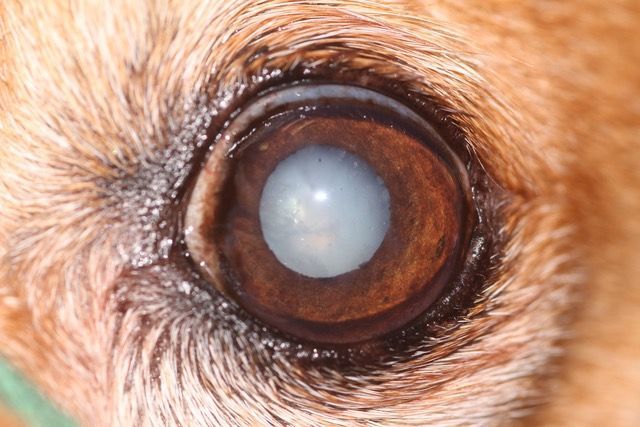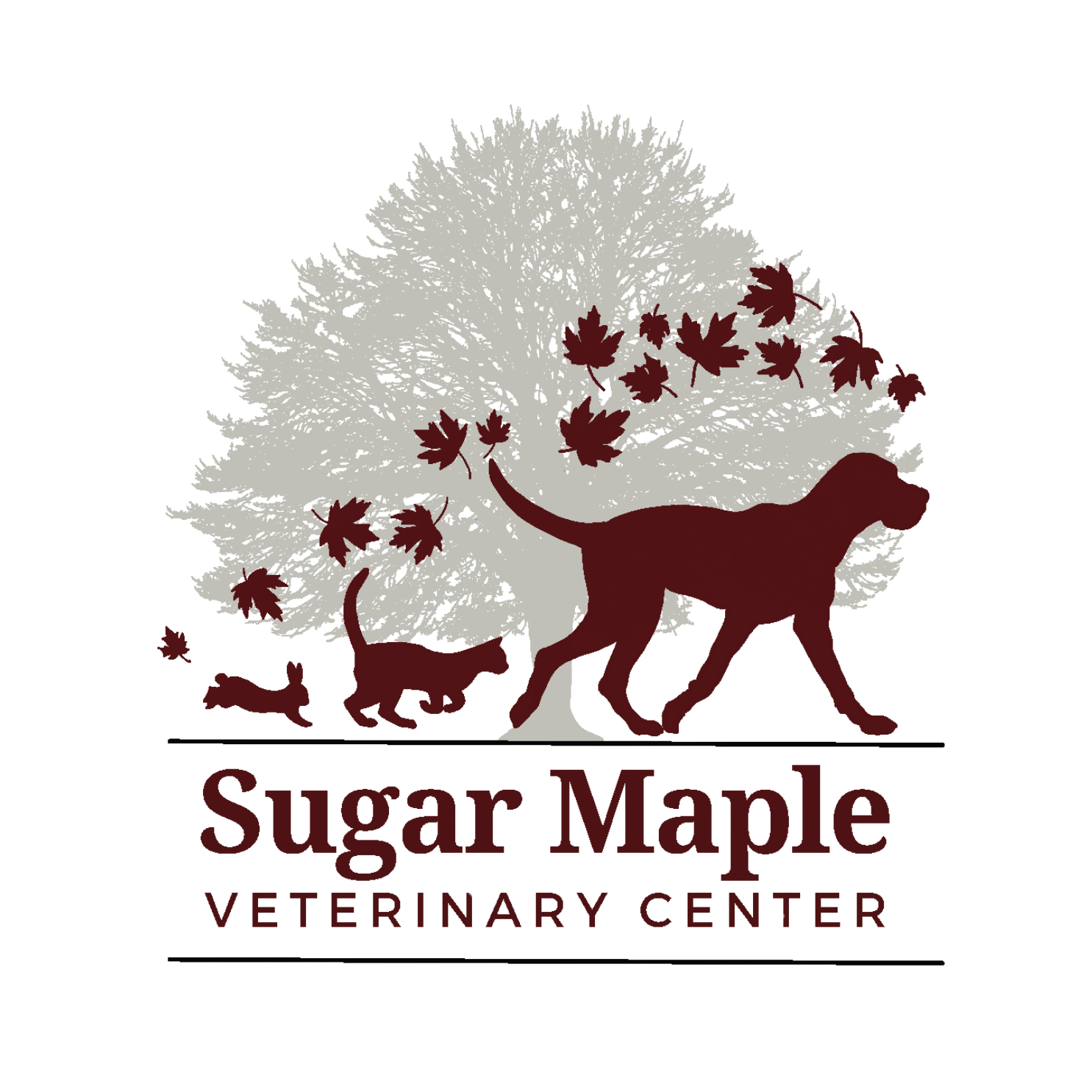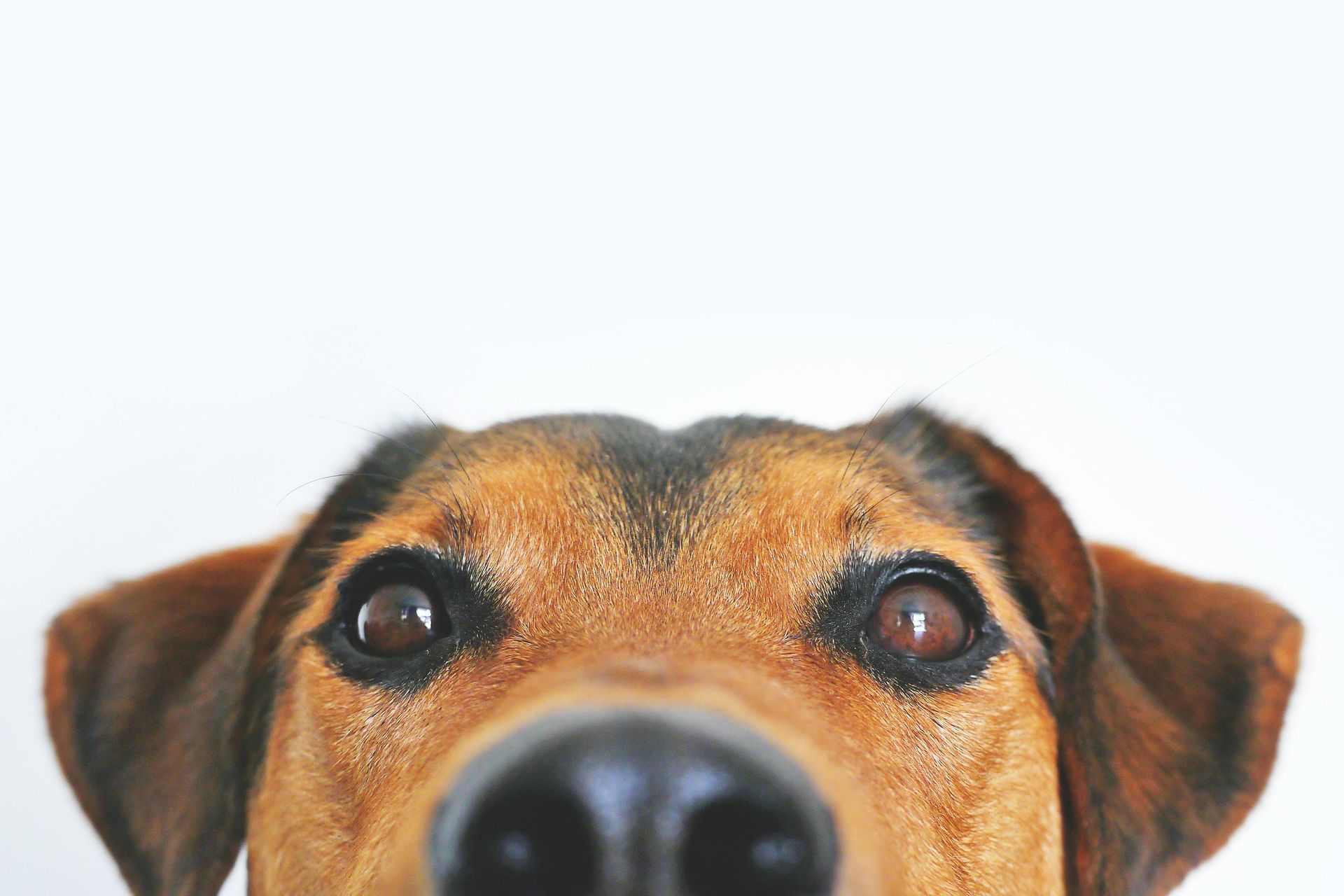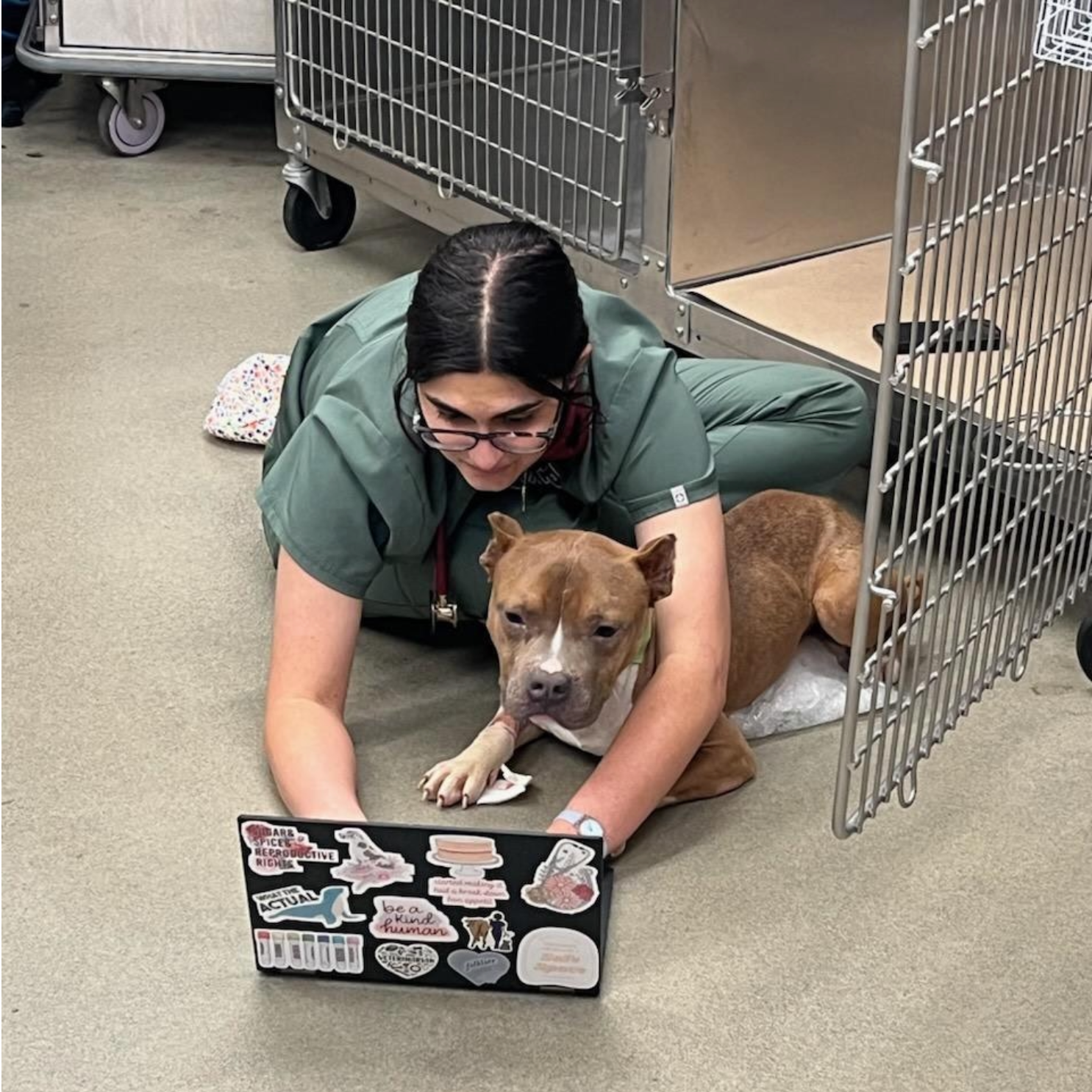Cataracts in Dogs

Cataracts are a relatively common eye condition in dogs that can result in vision impairment and even blindness if left untreated.
What are cataracts in dogs?
Cataracts occur when the lens of the eye becomes cloudy, stopping light from passing through to the retina and resulting in blurred vision. They can affect one or both eyes and vary in severity — from small, localized areas of cloudiness to complete opacity of the lens. While cataracts can develop at any age, they tend to be more common in old dogs.
What causes cataracts in dogs?
- Genetic factors: Most cataracts have a hereditary basis in dogs. Certain breeds like cocker spaniels, miniature poodles, and Siberian huskies are at greater risk and can develop juvenile cataracts at a young age.
- Age-related cataracts: Just like humans, dogs can develop cataracts as a natural part of the ageing process.
- Trauma: Injury to the eye can cause cataracts as a response to damage.
- Underlying health conditions: Diabetes is the most common disease associated with cataracts in dogs, as it can cause changes in the lens’s metabolism.
- Poor nutrition: A lack of certain nutrients, especially in puppies, can speed up the development of cataracts.
What are the signs of cataracts in dogs?
Early detection of cataracts is crucial for effective management. Common symptoms to look for include:
- Cloudy or bluish appearance of the eye: The most noticeable sign of cataracts is a visible cloudiness in one or both eyes but cataracts can assume a variety of appearances such as small spots, a cracked-ice appearance, a diffuse milky haze, a “pearl-like” sheen, or white streaks.
- Difficulty seeing in low light: Dogs with cataracts might struggle to move around in dimly lit areas.
- Bumping into objects: Vision impairment can cause your dog to regularly bump into furniture or walls.
- Reluctance to climb stairs or jump: Changes in depth perception could cause your dog to become hesitant when doing everyday things.
- Eye irritation: Your dog may paw at their eyes, have weepy eyes, have inflammation of the eyes or show signs of discomfort. Immature (early stage) cataracts do not generally cause pain, but mature (advanced stage) cataracts can lead to problems with the eyes like increased pressure (glaucoma) and inflammation (uveitis).
Cataracts won’t resolve on their own and can worsen over time. You should seek advice if you notice any symptoms.
What are the treatment options for cataracts in dogs?
Treatment ultimately comes down to the severity of the condition and the overall health of your dog, but some options include:
- Non-surgical management: In cases where cataracts are small or don’t majorly impact their vision, we might recommend monitoring the condition and managing underlying health issues, such as diabetes. We may also prescribe eye ointments or drops if indicated, to control secondary inflammation or increased eye pressure. However, there is no proven medical treatment known to reverse or slow the progression of, or prevent the formation of a cataract. Surgery is the only known treatment both in animals and humans, and often provides a return of functional vision to pets.
- Surgical intervention: Similar to humans, the most effective treatment for cataracts is surgical removal of the cloudy lens, followed by the implantation of an artificial lens. This procedure has a high success rate in restoring vision. However, it is a special type of surgery that should only be performed by a veterinary ophthalmologist. After surgery, your dog will need precise post-operative care, including eye drops, to prevent infection and keep inflammation to a minimum.
How do we prevent cataracts in dogs?
While not all cases of cataracts are preventable, there are some steps you can take to reduce your dog’s risk levels:
- Regular veterinary examination: Early detection of conditions like diabetes and Cushing's disease (hyperadrenocorticism) can help prevent cataracts from developing.
- Protect your dog’s eyes: Try to prevent your dog from being exposed to direct sunlight for long periods and avoid situations/environments where eye trauma is a higher risk.
- Balanced diet: Ensure your dog is fed a complete and balanced diet with enough vitamins and minerals, especially antioxidants, which support eye health.
How is it to live with a dog that has cataracts?
There are ways to help a dog who has been diagnosed with cataracts to adjust and maintain their quality of life. Dogs can still lead a very happy life, even with poor vision, they just need additional support to help them adjust. For one, don’t start rearranging the furniture or add any new obstacles to your dog’s living space, as this can cause confusion and accidents. Dogs are very good at working out a mental map of their environment, based on touch, smell and sound. Keep the environment as consistent as possible, remove any hazards and access to hazards (eg.: put barricades/gates on open verandahs, tall staircases, make sure their resources are easily accessible, etc). Train your dog to respond to verbal commands to help guide them through their environment when needed. And watch for any changes in your dog’s vision, such as increased cloudiness or signs of discomfort.
Cataracts can impact your dog’s vision and everyday life, but with proper care and management, your dog can enjoy a good quality of life.


